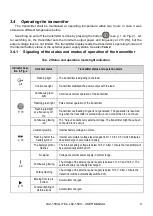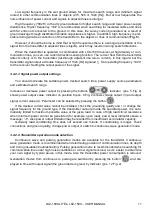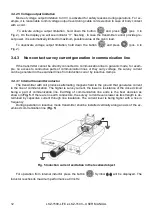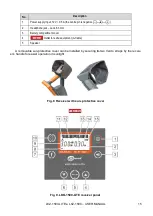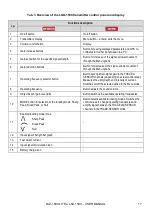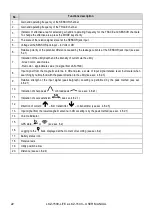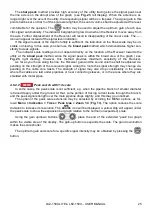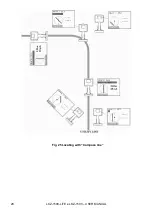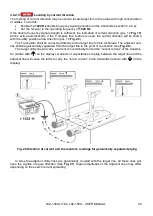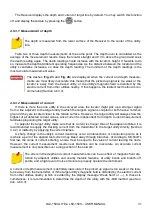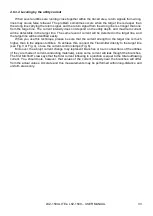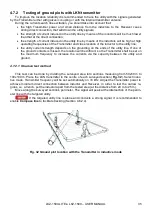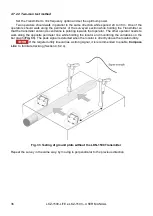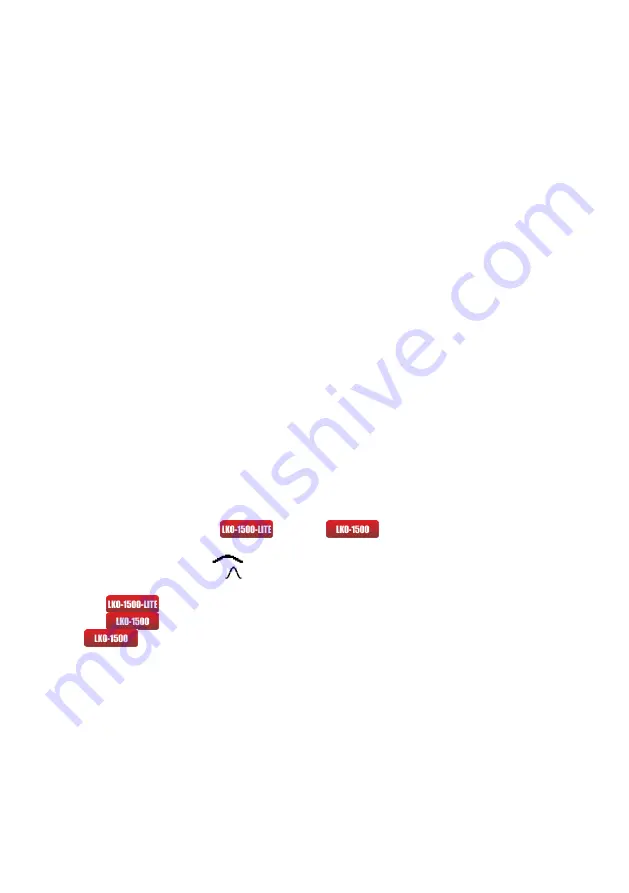
LKZ-1500-
LITE ● LKZ-1500 – USER MANUAL
23
4.6
Locating methods
4.6.1
Selection of operating frequency
Frequency selection shall be performed depending on operating conditions, targets and locating
method. The operator shall have corresponding qualification and practical skills. Note that the locating
effectiveness depends on the mineral contents in the soil, the water in the soil, the electric conductivi-
ty and burial depth of the object being located, the proximity of industrial facilities, and many more
contributing factors.
We recommend you to start location at low frequencies both by direct connection and induction
methods. If the necessary signal strength fails to be reached, you may operate the device at higher
frequencies. Low-frequency location provides maximum range of search, especially in the wet soil,
and it reduces interferences to other utilities. At the same time, the interferences of power signals and
adjacent utilities are stronger at lower frequencies.
At higher frequencies, the range of search is greater in dry or frozen soil, and interferences of
power signals and adjacent utilities are lower. Moreover, the signal loss is lower in presence of isolat-
ed connectors. The generated signal achieves higher transmission into the adjacent utilities at the
same time, which may cause misleading determination of the direction of survey.
It is possible to detect a line (utility) or faults without using the transmitter. The locator can detect
the natural frequencies generated by utilities in the following operating mode:
PWR50, PWR60
– the electrical current frequency (50 Hz, resp. 60 Hz) in industrial-like
signals (the fundamental frequency or the harmonics);
100 Hz, 300 Hz
– the frequency of digital signals;
SB, Radio
– the frequencies of radiotelephone or broadcast signals.
This method may cause false trails since the tracing of the utility may be complicated by branching,
and direction of the target utility may not be detected by “own signal”. The operator shall have corre-
sponding qualification and practical skills for this method.
4.6.2
Peak, null and current direction modes
The receiver features three (
) or four (
) magnet-mounted antennas. The Re-
ceiver shall be arranged vertically.
The broad peak tracing
– requires a lower horizontal antenna only
During sharp peak tracing
– two horizontal antennas operate
In the null locating mode, the receiver operates the following:
o
the horizontal antenna;
o
the lower horizontal antenna and the vertical antenna.
COMPASS LINE
mode requires all 4 antennas of the Receiver.
Summary of Contents for LKZ-1500
Page 1: ......
Page 2: ......
Page 18: ...LKZ 1500 LITE LKZ 1500 USER MANUAL 16 Fig 10 LKO 1500 receiver panel...
Page 30: ...LKZ 1500 LITE LKZ 1500 USER MANUAL 28 Fig 25 Locating with Compass line...
Page 57: ...LKZ 1500 LITE LKZ 1500 USER MANUAL 55 NOTES...
Page 58: ...LKZ 1500 LITE LKZ 1500 USER MANUAL 56 NOTES...
Page 59: ......
Page 60: ......

